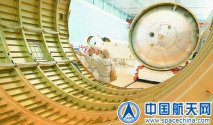You are using an out of date browser. It may not display this or other websites correctly.
You should upgrade or use an alternative browser.
You should upgrade or use an alternative browser.
China's Space Program Thread II
- Thread starter Blitzo
- Start date
by78
General
An upgraded Long March 3A rocket has finished final assembly and is undergoing final testing. The rocket has improved lifting capacity and reliability.

近日,由中国航天科技集团有限公司一院抓总研制的新一发长征三号乙火箭即将完成总装测试,本发火箭是长三甲系列火箭“双提升”工程的首发火箭。
“双提升”工程旨在全面提升长三甲系列火箭运载能力与可靠性。在提升运载能力方面,一院211厂完成了4类、28条技术状态变化的验证工作,确认了箭体结构、增压输送、总装总测三大系统72个重点关注项目。在提升可靠性方面,211厂对总装全过程状态从严要求,针对性梳理了装配风险点并予以排除,确保产品顺利完成总装测试。(谢博宇)


so, with Huawei's M60 phone, more domestic phone brands are expected to add support for Tiantong communication by end of the year.
Looks like we are going to need more satellites in the space to accommodate increased demand of space based communication.
the question is how much other telecom providers like China mobile and china unicom will also be forced to launch their own satellites. Also, how much more china telecom will invest in this area
I think the sim card for sattelite call (both voice and data) can be sold separately from ground based 4G/5G sim. Most phones sold in China support dual sim slots, so it isn't a problem for China mobile and Unicom users just add a sim for the sat without paying extra money. See here .View attachment 118641
so, with Huawei's M60 phone, more domestic phone brands are expected to add support for Tiantong communication by end of the year.
Looks like we are going to need more satellites in the space to accommodate increased demand of space based communication.
the question is how much other telecom providers like China mobile and china unicom will also be forced to launch their own satellites. Also, how much more china telecom will invest in this area
If the sat market grows much larger, a simple solution is to break the sattelite business off from China Telecom. The sattelite bussiness was a separate company before 2008 anyway. It was merged with China Telecom because its business is too small to be relevant as independent. All these companies are SOEs, the government can break or merge whenever it wants, its the beauty of socialism.
I think it had been posted in the ICBM thread last year, it is the engine for DF-5C/D not for launch vehicle.4. A new type high thrust engine. Although this poster does not say, the other picture of the program says that it is a closed-circle stage combustion hypergolic engine. It is replacement of YF-20 because YF-20 is 70t, this engine has 160% increased thrust reaching 100t class, 70t *160% is 112t which matches well.
Inclusion of this hypergolic engine seems to indicate that CASC conciously want to keep hypergolic engine and rocket alive for whatever reasons. So I think this refutes notions of "why China not using CZ-6,7,8 more than the old rockets" and "YF-100 production capacity is lower than needed". Just my thought, Neigher China nor CASC are run by some fanatic evironmentalist, so although we will reduce the usage of hypergolic rocket, but will master the highest possible tech level in the field and use it when deemed neccesary.
China Ballistic Missiles and Nuclear Arms Thread
Another HEO EW satellite coming up, rumored to be Shiyan-10-02. Scheduled to be launched by CZ-3B from Xichang on Dec.30th. Sorry! Should have been December 29, 2022 (~04:45 UTC), merely in 4 hours! Also TJS-7 has been re-located to 99.5°W, right above CONUS!
www.sinodefenceforum.com
Both CZ-2,3,4 launch vehicles and DF-5 use YF-20, so I fail to see how you made the conclusion in that post.I think it had been posted in the ICBM thread last year, it is the engine for DF-5C/D not for launch vehicle.
China Ballistic Missiles and Nuclear Arms Thread
Another HEO EW satellite coming up, rumored to be Shiyan-10-02. Scheduled to be launched by CZ-3B from Xichang on Dec.30th. Sorry! Should have been December 29, 2022 (~04:45 UTC), merely in 4 hours! Also TJS-7 has been re-located to 99.5°W, right above CONUS!www.sinodefenceforum.com
BTW, I have read study papers that stated that there was the intention of upgrading CZ-2,3,4 with new engines. Maybe that idea has died or is still alive, we don't know yet. The chances of seeing DF-5 with new engine and old CZ with new engine are about same, as both of them have more capable replacement already.
I do agree with you to put a question mark to my statement of the refuting part. We may never see this new hypergolic engines being put in use, just like YF-130, as intended in the begining of the 9 engine program. The key importance of developing such engine is to acquire competence for future application. For example, taking off from moon and mars both need high thrust engine which uses storable fuel in the forseeable future.
Last edited:
2023-09-14 09:10:02Global Times Editor : Li Yan
China has shared over 1.5 terabytes of remote sensing satellite data with BRICS countries, and will continue to promote the application of remote sensing satellite data to all walks of life in BRICS members’ societies, the China National Space Administration (CNSA) said recently.
According to CNSA, the establishment of BRICS Global Remote Sensing Satellite Data and Application Cooperation Platform, a cooperation mechanism in joint observation and data sharing of the remote sensing satellites among the five major emerging economies -- Brazil, Russia, India, China and South Africa, will achieve rapid collection, efficient sharing and joint application of satellite data among BRICS countries, promote the remote sensing satellite services of BRICS to benefit the world, enable sustainable economic and social development in the region and help meet the common challenges facing the world.
Remote sensing satellite technology, with advantages including its high-resolution, full-range and global observation capabilities, has increasingly become one of the key measures to cope with global challenges in the 21st century, such as crops and food crisis, and water resource shortage as well as global climate change, the CNSA explained.
On August 18, 2021, heads of the BRICS space agencies signed an agreement on cooperation on BRICS Remote Sensing Satellite Constellation, with China-made satellites including China’s Gaofen-6 and Ziyuan-3 02 joining the cooperation. Ground stations in Sanya of South China’s Hainan Province are also supporting the program.
On May 25, 2022, during the first meeting of the joint commission on space cooperation of the BRICS countries hosted by the CNSA, as China was the chair of the BRICS in 2022, the joint committee resolution supported joint observation by BRICS countries in designated specific areas identified and carry out cooperation in the field of remote sensing satellites in the form of remote sensing data exchange.
According to an official from CNSA, China has carried out a series of practical work in accordance with the agreement for cooperation in remote sensing satellite data sharing. Since the signing of the agreement, CNSA has successively launched China’s website for the BRICS remote sensing satellite constellation, providing metadata and sample data from Chinese remote sensing satellites, to promote data sharing among BRICS nations and ensure the smooth operation of data exchange mechanism.
Moreover, CNSA also proposed the pilot and demonstration projects for the BRICS remote sensing satellite constellation to promote joint observation and speed up data sharing and application, set up the Chinese data and application center specialized in the construction coordination, date receiving, processing and delivering and application for the BRICS remote sensing satellite constellation.
In the future, based on the Chinese data and application center, China will further deepen and expand existing cooperation mechanism, and step up the construction of the cooperation platform, allowing the Chinese remote sensing satellite data to serve more countries and to contribute to the achievement of the United Nations 2030 Sustainable Development Goals, to promote building a community of a shared future for mankind, according to CNSA.
Apart from cooperation with the BRICS members, China also collaborates with other countries in other space projects, such as the International Lunar Research Station (ILRS) program. Before the Venezuelan President Nicolás Maduro Moros’s visit to China starting last Friday, Venezuela and China signed a declaration to formally join the ILRS program on July 18 to continue to deepen the strategic partnership with China.






